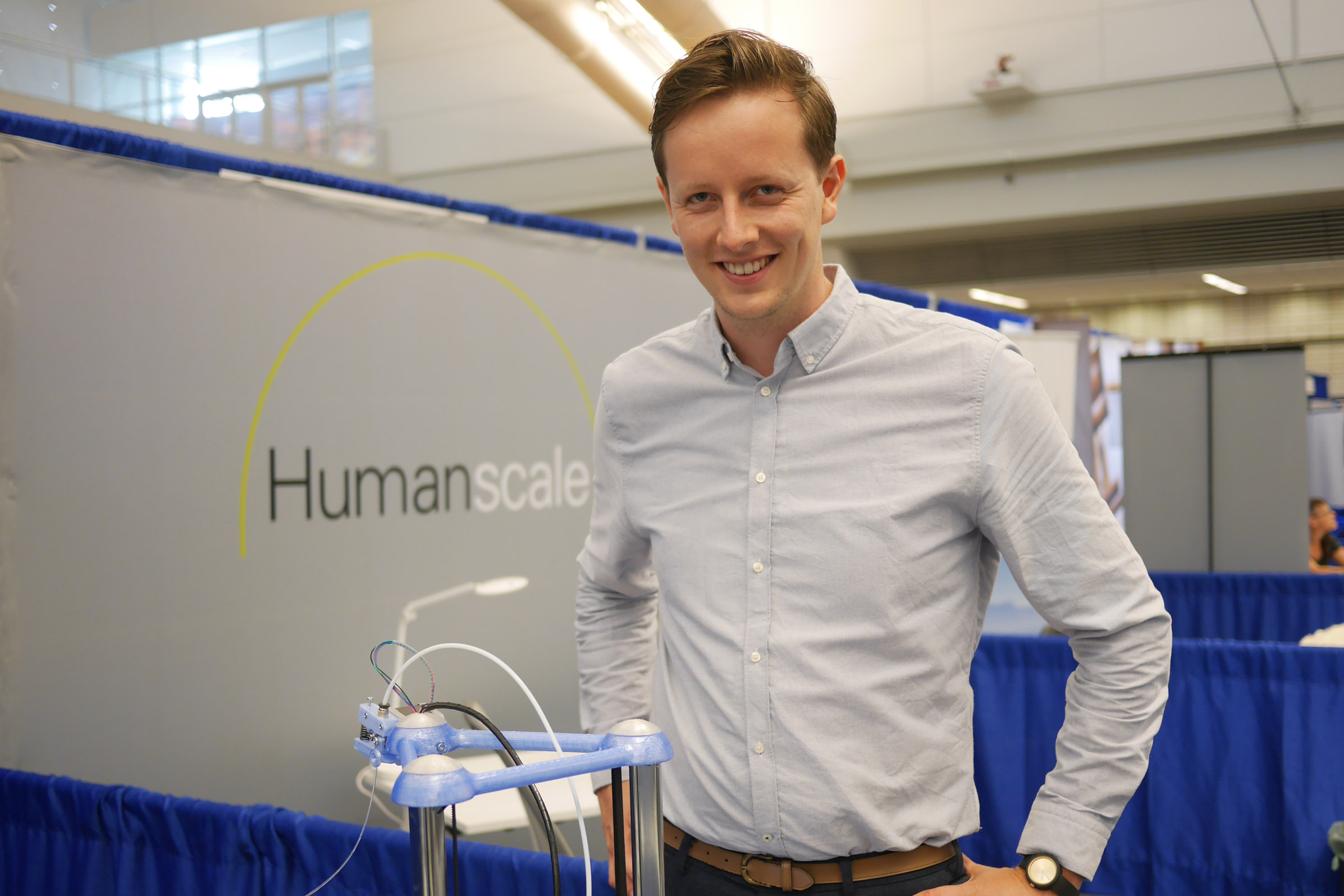This New Machine Can Recycle Plastic Ad Infinitum
Plastic pollution is all around us. You can find it in everything from grocery bags blowing down the road to islands of plastic floating in the oceans. But new technology demonstrated at a recent green products expo in Pittsburgh is getting people to think differently about plastic’s lifecycle.
“So what we have here is a mobile plastic recycling installation,” says Dutch industrial designer Bart Bleijerveld, showing off the new gizmo. “We call it the Perpetual Plastic Project.”
LISTEN: Your Environment Update for September 28, 2016
To demonstrate, he drops an ordinary plastic cup into a shredder with a manual crank, and then turns it to break the cup down into smaller pieces. The confetti-sized pieces then go through the extruder—a machine that heats the plastic to 200 degrees and pumps the warm goo through a small hole.
“It’s a bit like toothpaste,” Bleijerveld says.
The end product is plastic wire that’s the “ink” for 3D printers. Bleijerveld’s company, Better Future Factory, uses an industrial-scale version of this model to make printer ink from old car dashboards and refrigerators.
“If you recycle [plastic] into new products, and recycle it into new products, and recycle it into new products—you can actually use the strength of having a long lifetime as a benefit instead of a problem.”
And whatever is whipped up on the 3D printer can go right back into the shredder and become something else.
Want to see the Perpetual Plastic Project in action? Check it out here.
Reporting by Kara Holsopple
States Suing Over Climate Change Plan Get Their Day In Court
Climate change barely got a mention in Monday’s presidential debate, but it was a big week in the history of the nation’s climate policy. On Tuesday, a panel of 10 federal appeals court judges in Washington, D.C. heard arguments on the Clean Power Plan—the cornerstone of President Obama’s effort to curb climate change.
The Environmental Protection Agency rules announced in 2015 are designed to cut carbon emissions from coal-fired power plants by about a third by 2030. The plan also requires states to meet specific reduction targets based on their energy production and includes an incentive program for states that start moving toward renewable energy. But several states, including West Virginia, have filed suit over the new rules—even as other states, like Pennsylvania, move toward compliance.
“The arguments really were focusing on this question of what exactly EPA is regulating,” says Emily Holden, who covered the hearings for E&E’s ClimateWire. “So EPA set these individual state standards, and the challengers are arguing that in doing that, EPA looked at the overall power system and said, ‘Well, it looks like we could have more natural gas, more renewable power and less coal.’ And there is this idea of a trading system where coal companies can buy [pollution] credits to keep their plants online. The challengers are saying that’s not fair—that EPA should only be able to regulate coal plants specifically. They shouldn’t be able to sort of spur changes in the broader power sector.”
But advocates of the rule say the EPA was merely trying to give states more flexbility in adapting to a trend that’s already happening in the power sector.
“A lot of utilities have already been pushing toward cleaner fuels,” Holden says. “They say that this would just accelerate that shift—that it wouldn’t really be a transformative change in the industry. And they also really touted the health and climate benefits. The Obama administration has said that this is very important in getting other countries to agree to reduce their greenhouse gas emissions as well.”
Holden says the D.C. Circuit will probably not issue a decision until the end of this year. And given that the Supreme Court may not decide whether to take up the case until the fall of next year, it’s very likely that the Clean Power Plan could remain in limbo until 2018.
Reporting by Kara Holsopple

